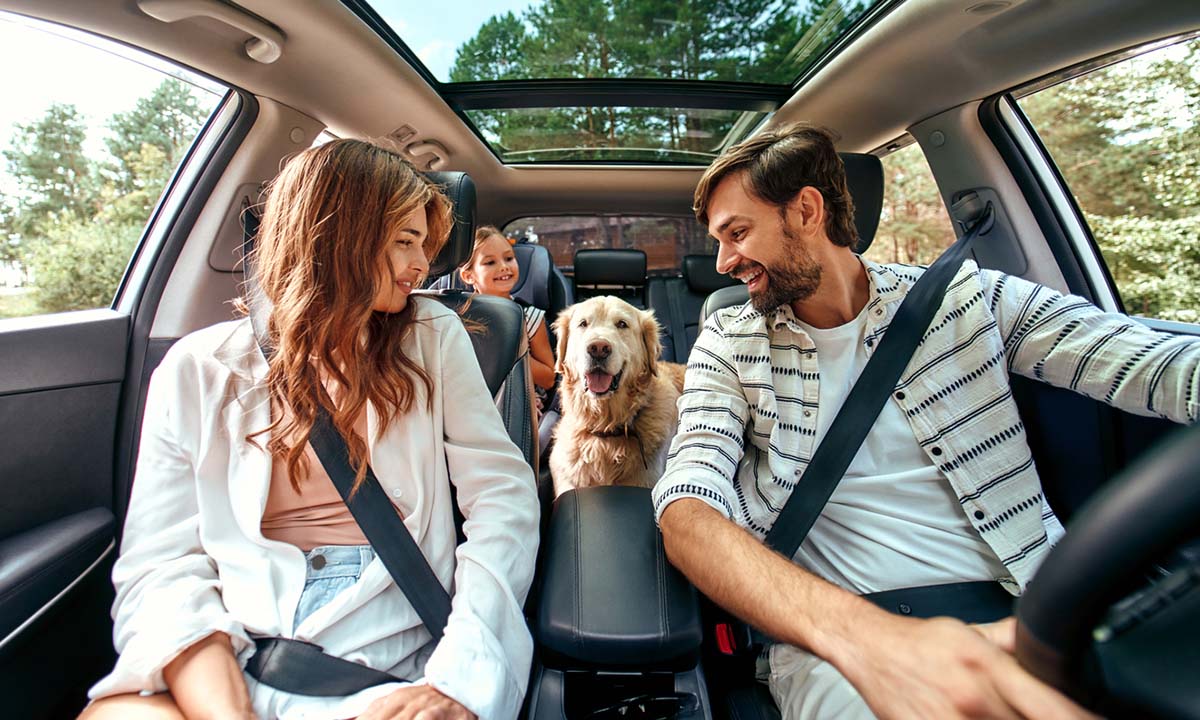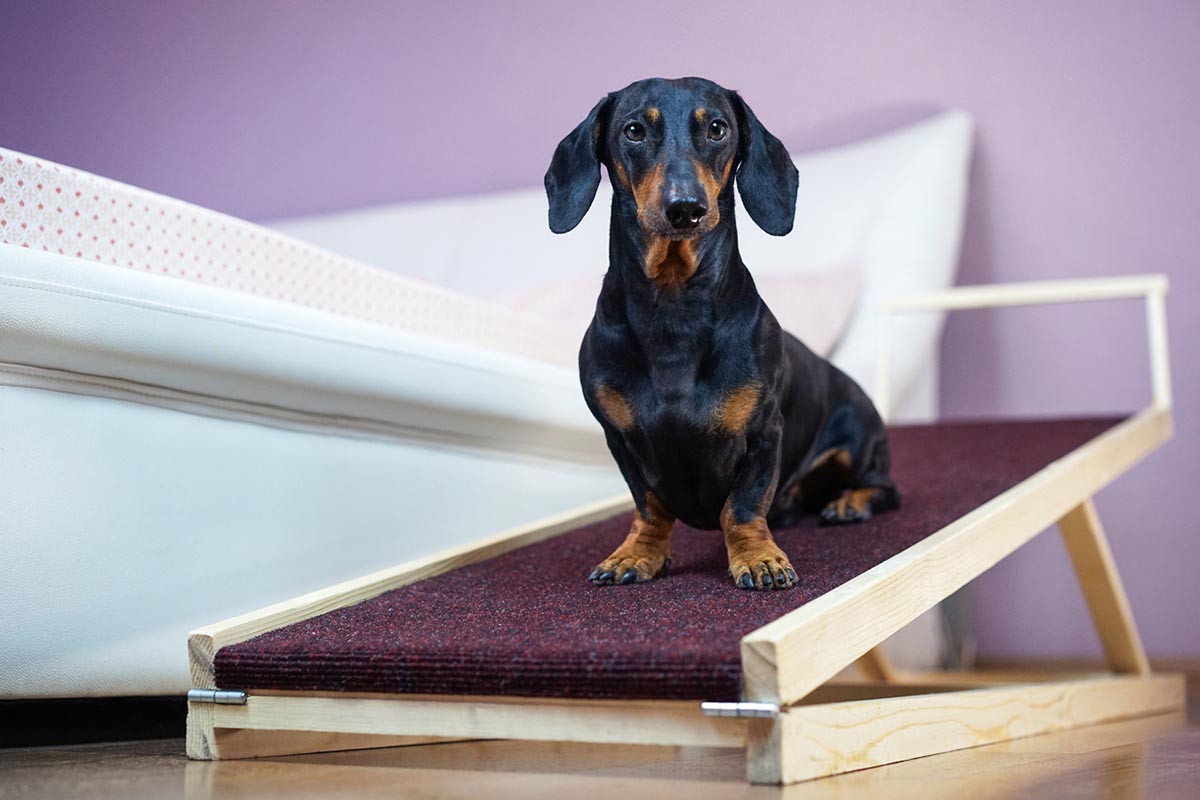4 Amazing Hairless Dog Breeds
The following four dogs are some of the most popular hairless dog breeds.
There are only a handful of hairless dog breeds. Hairless, bare-bodied dogs are among the most unique and charming of all our canine friends.
People are drawn to hairless breeds for a variety of reasons. Some pet parents appreciate that you don’t have to brush them all the time or put up with hair everywhere. Others just love hairless breeds’ rare status and unique appearance.
“They’re weird, they’re cool, they’re very striking,” say JustFoodForDogs’ board-certified veterinary dermatologist Dr. Laura Wilson, DVM, Dipl. ACVD. “I know some people who only have hairless breeds. They can look absolutely elegant with their smooth skin.”
Hairless Vs. Hypoallergenic
Some people with dog allergies can tolerate living with hairless breeds, although no dog, including a hairless dog, is guaranteed to be hypoallergenic. This is because hairless breeds still produce dander—microscopic bits of dried skin cells that all dogs shed into the environment.
People who are allergic to dogs are allergic to the proteins found in dander, not the hair itself. Dogs with coats tend to trigger allergies because hair and dander go together. As a result, both are spread throughout the house when the dog sheds.
Hairless dogs don’t shed, so they spread less dander than some other breeds. They also require frequent baths to keep all that exposed skin clean and healthy. This reduces the amount of dander on their bodies as well. These factors could make hairless breeds a viable option for people with less severe allergies.
The only way to know if you will react to a hairless breed or not is to spend time around them. Even then, individual dogs can produce different amounts of dander. It’s possible to react to one dog and not another, even within the same breed. That said, many people with dog allergies, especially mild dog allergies, find they can live comfortably with a hairless dog.
Hairless Dog Breeds: What You Need to Know
Hairless breeds are the result of a random and spontaneous genetic mutation that causes a puppy to be born without hair. If that puppy is bred, however, it can pass on the gene to litters that may also be born without hair.
Interestingly, the gene that causes hairlessness can also cause missing adult teeth, called incomplete dentition. It’s not uncommon for hairless breeds to have fewer teeth than usual.
Some hairless breeds, like the Chinese Crested, Peruvian Inca Orchid, and Xoloitzcuintli (Mexican Hairless Dog), are very ancient. The Xoloitzcuintli is thought to be 3,000 years old, and the Peruvian Inca Orchid is depicted in pottery as far back as 750 AD. No one knows exactly how old the Chinese Crested breed is, but it was developed in China, likely by breeding large African hairless dogs down in size.
One hairless breed has modern roots. The American Hairless Terrier came about when a bald Rat Terrier puppy was born in Louisiana in the 1970s. The pet’s parents were taken with the hairless pup and wanted to see if they could create more like her. A careful breeding program solidified a new breed: the American Hairless Terrier.
All hairless breeds come in both hairless and coated varieties. In any given litter, some of the puppies will be born with hair and some will be hairless. Other than differences in hair coat, everything else about the puppies should be identical—including size, temperament, and gait.
Most Popular Hairless Dog Breeds
There are big hairless dog breeds, small hairless dog breeds, and medium hairless breeds, so you can find whatever size hairless dog you fancy.
The list of hairless breeds of dogs you might encounter includes the following AKC hairless dog breeds:
- American Hairless Terrier
- Chinese Crested
- Peruvian Inca Orchid
- Xoloitzcuintli
These popular hairless breeds can be found throughout the world. Other extremely rare hairless dog breeds, such as the Argentine Pila Dog, are seldom seen outside of their native regions.
American Hairless Terrier
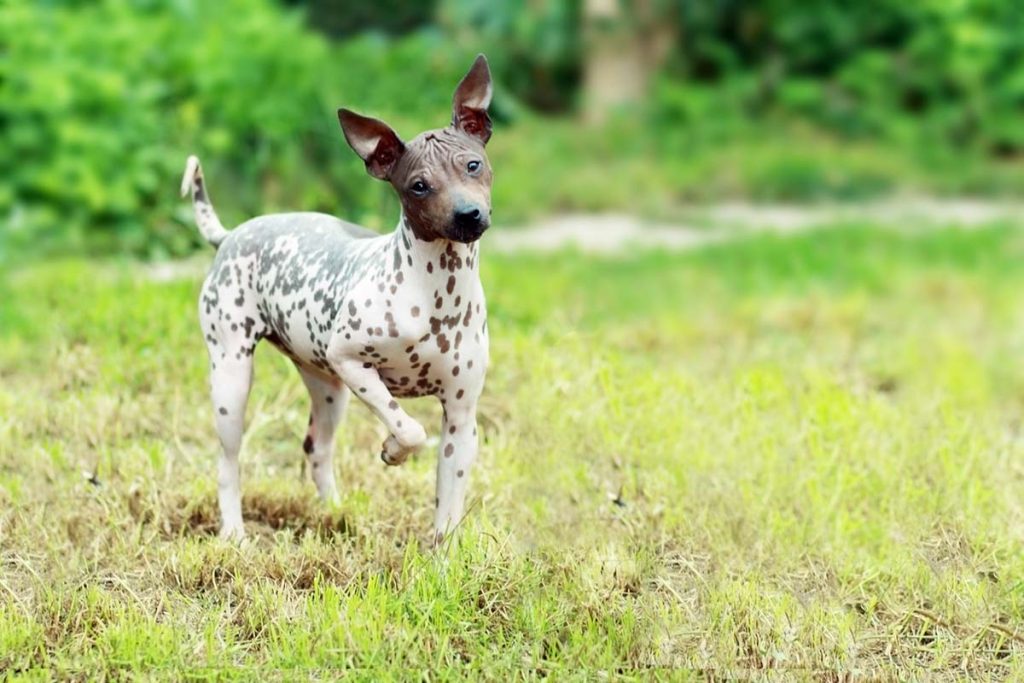
If you’re looking for a completely hairless dog breed, there’s nothing on the American Hairless Terrier dog’s skin. Completely bald (aside from possible whiskers or eyebrows), the American Hairless Terrier has soft, smooth skin. Puppies are born with a downy “birth coat,” which falls out by the time the pups are about 8 to 10 weeks old.
Unlike other hairless breeds, the American Hairless Terrier is not known to have missing teeth. American Hairless Terriers are active but don’t require huge amounts of exercise. They are intelligent, easy to train, lively, and friendly. Weighing in at about 12 to 18 pounds, American Hairless Terriers are the perfect size to accompany you everywhere.
Chinese Crested
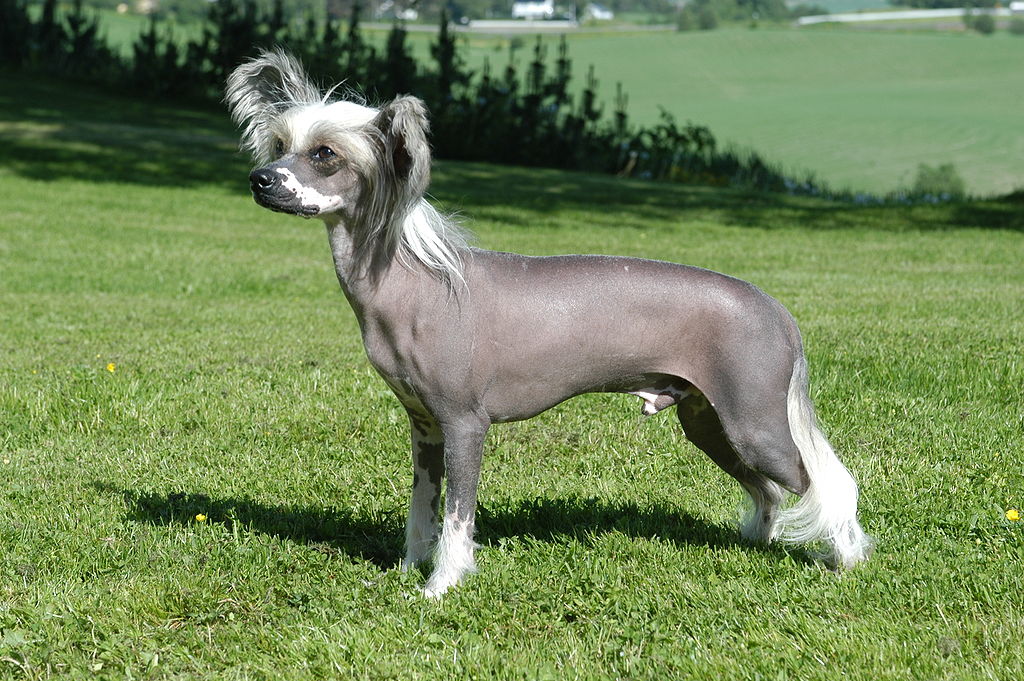
Some people think the Chinese Crested dog is similar looking to the Chihuahua one of the cutest hairless dog breeds. With silky hair cascading over the head (called a crest), plus a little tufts of hair on the tail (called a plume) and feet (called socks), the Chinese Crested is not truly hairless, although its soft, smooth body is completely bare.
Unlike the hairless variety, the coated variety, called Powderpuff, has a straight, soft, silky coat that’s low shedding and needs minimal brushing and grooming. Part of the American Kennel Club Toy Group, the Chinese Crested is diminutive, weighing in at just 8 to 12 pounds. Lively and sweet, these dogs want to be with you as much as possible and do not do well if left long hours alone. Playful but not overly active, Chinese Cresteds need moderate daily exercise.
Peruvian Inca Orchid
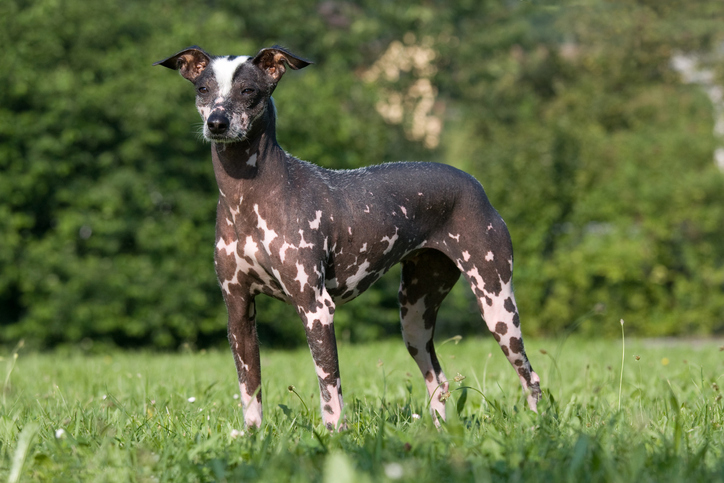
The typical Peruvian Inca Orchid, also known as PIO or the Perro sin Pelo de Peru (Peruvian Hairless Dog), is completely hairless. Short hairs on the head, feet, and end of the tail are acceptable, according to the official standards of the AKC. The coated variety has a short to medium-length coat. They come in three size varieties:
- small (about 8.5 to 17.5 pounds)
- medium (about 17.5 to 26.5 pounds)
- large (about 26.5 to 55 pounds)
PIOs are sighthounds, a type of dog that hunts using its speed and eyesight. Like most sighthounds, PIOs should not be trusted with smaller animals due to their high prey drive. Lively and affectionate with family, the PIO is reserved with strangers and can be excellent watchdogs.
Xoloitzcuintli (Mexican Hairless Dog)
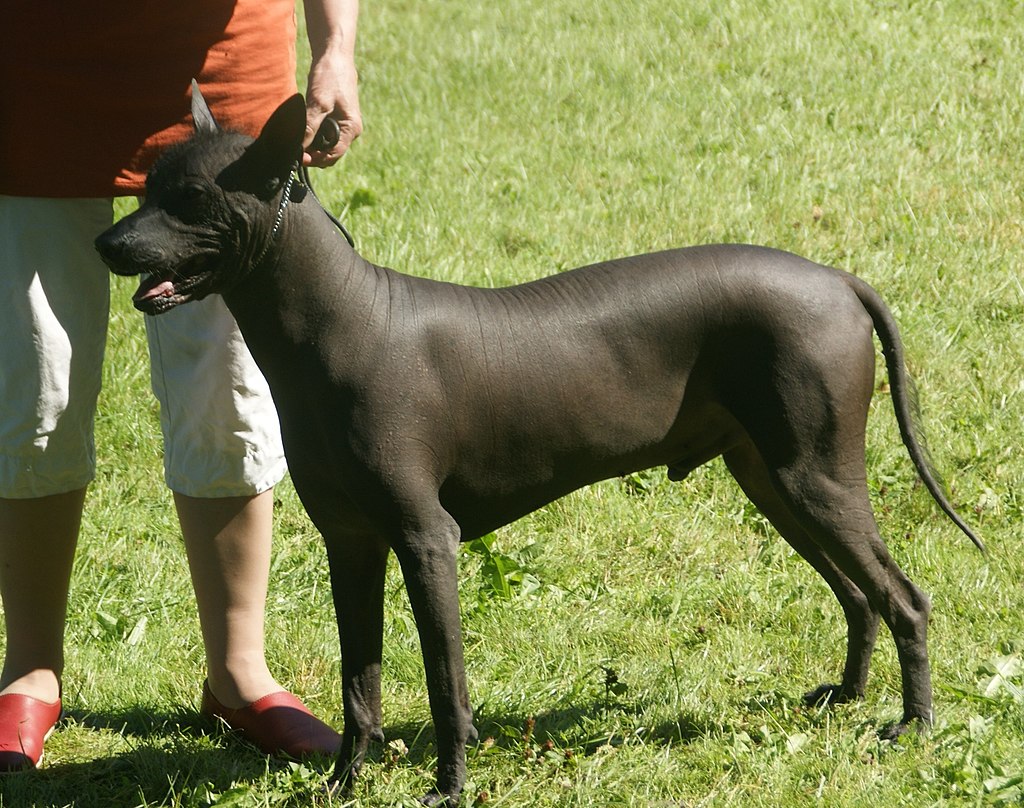
Wondering how to pronounce this ancient breed name? Try saying “show-low-eats-QUEENT-lee” or “show-low” for short. The Xolo is mostly bald but can have a small amount of short, coarse hair on the top of the head, feet, and end of the tail. Hailing from Mexico, it was considered the ancient Aztec dog of the gods.
Unlike other hairless breeds, the Xolo’s protective skin is not soft and delicate, but rather thick and tough. Xolos come in three size varieties:
- toy (about 10 to 15 pounds)
- miniature (about 15 to 30 pounds)
- standard (about 30 to 55 pounds)
Xolos are very calm dogs. They can be aloof with strangers but are very attached and loyal to their human family. Puppies and adolescents need more exercise, but mature Xolos are usually content with daily walks and playtime.
Care and Feeding of Hairless Dog Breeds
Hairless dog breeds do have some special care requirements, especially for maintaining healthy skin. You don’t need to brush hairless dogs (with the exception of the Chinese Crested, which does benefit from minimal brushing). But these breeds must be bathed far more often than dogs with hair, so they are not without grooming requirements.
Though classified as “hairless” dog breeds, these dogs could more accurately be called “almost hairless” dog breeds. All of them have some type of hair on their bodies. These include whiskers, peach fuzz, stray hairs, or sprouts of short or long hair in specific places.
“People might not know that hairless dogs can have hair,” Dr. Wilson says. “They still have hair follicles and they still have glands, they just don’t produce hair properly.”
According to Dr. Wilson, sebaceous glands make sebum, an oil that coats the hair and gives it shine and protection. In dogs with hair, the gland makes sebum and shoots it out as the hair grows out through the skin. However, if there isn’t a hair to pull the sebum out, it can become plugged up, causing skin issues.
Hairless dogs need regular bathing with gentle shampoos. Their skin gets very oily and greasy debris can build up and cause problems like acne, skin inflammation, infections, and itchy skin. “They get blackheads—the fancy term for that is a comedone,” Dr. Wilson says. “Because those glands and those baby hairs are still there, they can get ingrown hairs, inflamed skin, and secondary infections in the hair follicle affecting the glands.”
With hairless breeds, it’s important to keep a close eye on the appearance of the skin. Schedule an appointment with your veterinarian if the skin looks red, inflamed, scaly, or itchy, or if you see ingrown hair follicles that might be infected.
Protecting the Skin
Because these breeds lack a hair coat, pet parents must remain diligent about protecting their skin from sunburn. Limit time outside—especially midday when the sun is most powerful—and provide shade access outdoors. If your hairless dog will be outside in the sun, use sunscreen or protective clothing.
“There are dog sunscreens out there, but personally I usually have my clients use a good-quality, human-grade UVA/UVB sunscreen product,” Dr. Wilson says. “Apply it every 2 to 4 hours, just like we should be doing for our skin.”
On the flip side, keep hairless dogs warm in cold weather. Limit outdoor access when the weather is very cold or wet and bundle them up with cozy clothing like sweaters or jackets.
Healthy Skin from the Inside Out
For any dog—and people, too—healthy skin starts with a healthy diet. Hairless breeds can benefit from a complete and balanced diet like JustFoodForDogs Fresh Frozen and PantryFresh meals, which are made with healthy whole food ingredients and contain no preservatives.
“If we eat poor, crummy food, our skin and hair don’t look as it does as if we eat a well-balanced diet,” Dr. Wilson says. “Good, quality food, a well-balanced diet can only support healthy skin.”
To promote healthy skin, JustFoodForDogs offers a special Joint & Skin Support recipe made with pork tenderloin, quinoa, kale, carrots, and Fuji apples. There is also a Skin & Allergy Care supplement with olive leaf extract to soothe allergy-related skin issues.
The Key to Happier, Healthier Hairless Dogs
Hairless dogs are unique in looks, personality, and lifestyle, and that’s what most people love about them. “They take a different level of care than a haired dog,” Dr. Wilson says.
Work with your breeder or veterinarian to determine the best skincare routine for your hairless breed. Feed a high-quality diet rich in omega fatty acids to support skin health, and ask your veterinarian if your dog would benefit from a fish oil supplement for additional omegas.
Jackie Brown is a freelance writer based out of California. She has an extensive background in pet health care, including veterinary and pet health topics, general care, nutrition, grooming, behavior, training, rescue and animal welfare, lifestyle, breeding and showing, dog sports and activities, and the human-animal bond. Jackie is a proud dog mom to one crazy miniature poodle and human mom to two crazy boys.





